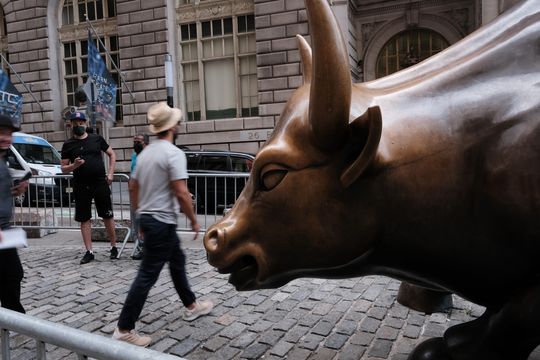The return to record highs in U.S. stocks following last week’s abrupt two-day selloff is reinforcing the risks of what analysts regard as a “fragility” shock characterized by an unstable market.
New highs in equities this week “will merely encourage more of the investor behavior that historically precedes larger fragility shocks,” according to a BofA Global Research note released Tuesday.
U.S. stocks continued to march higher Tuesday, with the S&P 500 SPX, +0.15% and Nasdaq Composite COMP, +0.52% indexes on track for records as bulls continued to find fuel in the U.S. Food and Drug Administration’s full approval of the first COVID-19 vaccine on Monday. However, seasonal factors and an impending turn in Federal Reserve policy, namely, an anticipated tapering of the central bank’s $120 billion in monthly bond purchases, only raises the possibility of a bigger shock in the months ahead, according to the BofA analysts.
“To cheaply own further potential upside without having to call the market top, we reiterate our preference for long SPX calls funded by selling VIX puts,” they wrote. “The entry point is historically attractive and VIX will likely be supported by tapering risks” around the September FOMC meeting, “even if equities go higher in the meantime.”
Stocks sold off last week, starting on Aug. 17, with losses accelerating the next day when minutes of the Federal Reserve’s July policy meeting showed most officials backed the start of tapering bond purchases this year. On Aug. 18, the Dow Jones Industrial Average DJIA, +0.09% and S&P 500 booked their worst declines in a month.
Last week’s weakness in equities “was symptomatic of the fragility of markets in seemingly `calm’ periods,” the BofA analysts said. “While we’re still concerned about fragility risks going into the fall, it’s also important to recognize the potential of fragile markets to experience sharp reversals.”
The note was written by a group of analysts, who included Gonzalo Asis, Benjamin Bowler and Riddhi Prasad.

